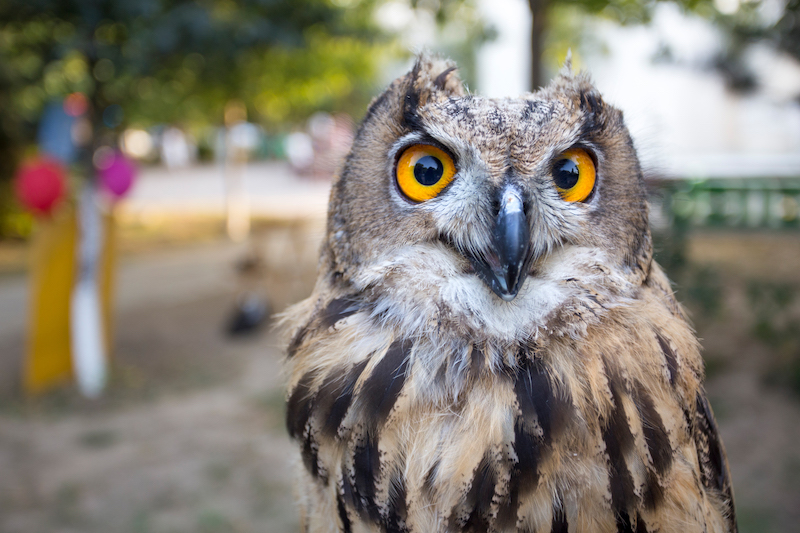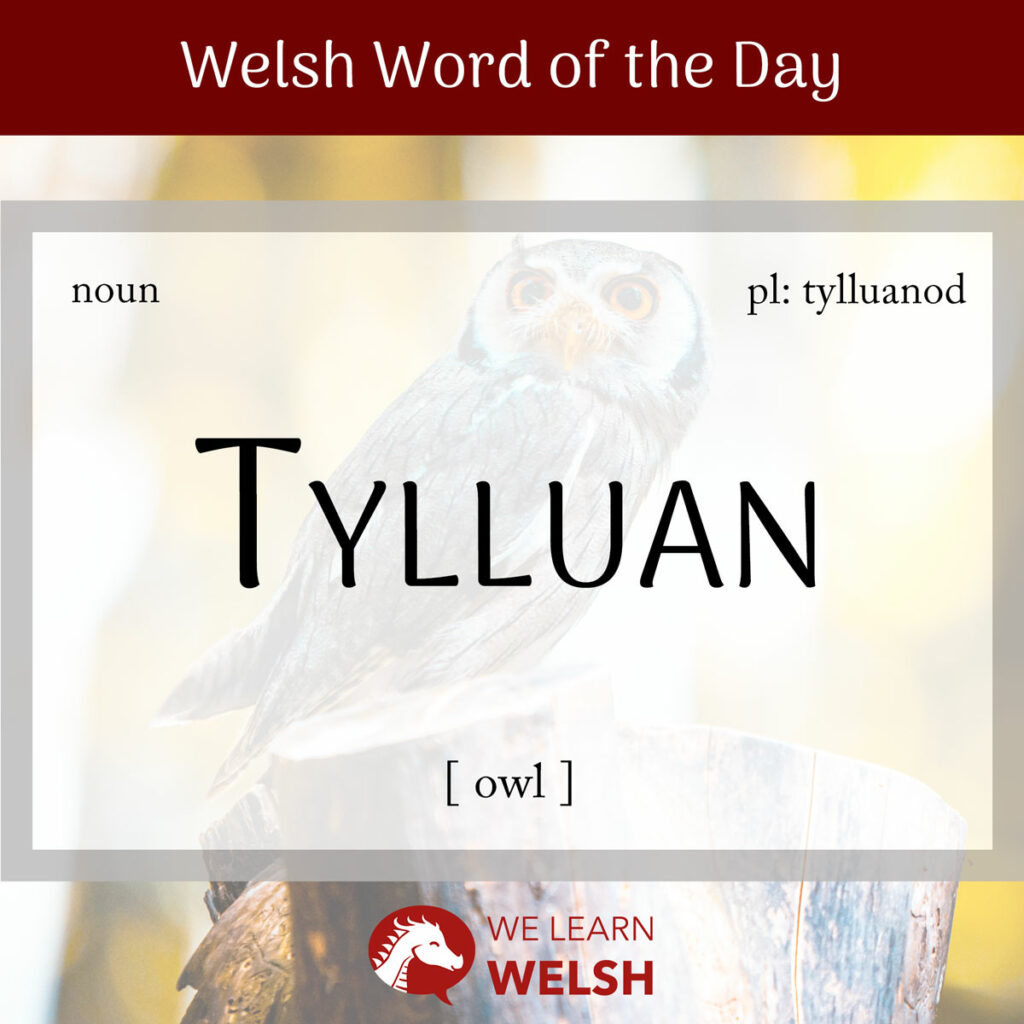Growing up, owls were my best friend’s favourite animal, so I always tried to get them presents in the shape of a tylluan (owl). In honour of these marvellous birds (and my marvellous friend), today’s Welsh word of the day is tylluan (plural: tylluanod), which is a feminine noun meaning owl. These adar nosol (nocturnal birds) are known for their llygaid mawr (big eyes) and plu hardd (beautiful feathers).
tylluan
owl
Tylluan is susceptible to all three mutations:
Soft mutation
dylluan
Nasal mutation
nhylluan
Aspirate mutation
thylluan
You will likely also hear a more informal, playful word for owl: gwdihŵ. This delightful word is an example of onomatopoeia, naming things after the way they sound (for example, take the English word hiccup).
gwdihŵ
owl
In this case, gwdihŵ is supposed to sound like the call of a tylluan frech wryw (male tawny owl). Have a listen for yourself and see what you think!
Here’s how to mutate gwdihŵ:
Soft mutation
wdihŵ
Nasal mutation
ngwdihŵ
Aspirate mutation
N/A
Owls generally have a reputation for being doeth (wise) and are often used as a symbol of gwybodaeth (knowledge). This idea can be traced back to the myths of Groeg glasurol (Ancient Greece), where Athena, the goddess of knowledge, is often accompanied by a tylluan. In chwedloniaeth Gymraeg (Welsh mythology), however, owls represent not knowledge but marwolaeth (death). This is why we have aderyn corff, a traditional term for barn owl which translates as corpse bird.
Camdybiaeth gyffredin (a common misconception) about owls is that they can turn their heads a full tri chant chwechdeg gradd (360 degrees). Although they have amazingly hyblyg (flexible) necks, most researchers think that the limit is 270 degrees. This is still very impressive – 270 degrees is tri chwarter (three quarters) of a full turn! Sometimes reality is strange enough without needing to gorddweud (exaggerate).
Eu hoff anifail yw’r dylluan.
Their favourite animal is the owl.
There are five rhywogaethau (species) of owl found in Wales:
- barn owl = tylluan wen, tylluan ysgubor, aderyn corff
- little owl = tylluan fach, coeg-dylluan
- long-eared owl = tylluan gorniog, tylluan hirglust
- short-eared owl = tylluan glustiog, tylluan glust fer
- tawny owl / brown owl = tylluan frech / felynddu / lwyd / rudd
According to The Owls Trust, all of these species are native to Wales except y dylluan fach, which was introduced to the UK in 1842. This owl eats mwydod (worms), mamaliaid bach (small mammals) and pryfed (insects), including many plâu (pests), which is good news for farmers!

Sadly, some of these owl species are dwindling in numbers due to loss of cynefin (habitat). For example, tylluanod glustiog (small-eared owls) have suffered due to drainage of corsydd (marshes). Tylluanod wen (barn owls) in particular are struggling due to modern farming practices; they face the loss of many important natural habitats (hedgerows, meadowland) as well as, of course, a reduced number of hen ysguboriau (old barns) to live in.
But, as the Welsh say, daw eto haul ar fryn (there’s light at the end of the tunnel lit: sun will come again on a hill). The population of tylluanod frech (tawny owls) is doing just fine, in large part due to these owls’ ability to addasu (adapt) to new habitats and food sources.
Mae tylluanod Tengmalm mor ddel!
Tengmalm owls are so cute!
The Welsh language also has words for other, non-British species of owl…
- hawk owl = gwalchdylluan
- horned owl = tylluan glustiog / tylluan gorniog
- pygmy owl = cordylluan
- snowy owl = tylluan yr eira
- Tengmalm’s owl = tylluan Tengmalm
…and we’ve even named some other animals after owls!
- owl moth = gwyfyn tylluan
- owl pigeon = colomen ben tylluan
As we’ve learned today, a tylluan can represent many things depending on your diwylliant (culture) and your profiadau (experiences). So, what do owls mean to you? Do you think we should try to keep them around for the next cenhedlaeth (generation) to enjoy?

